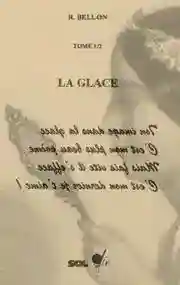Sinhala love poem
කැඩපත
කැඩපතේ ඔබේ රූපය
මගේ ලස්සනම කවිය
නමුත් ඉක්මන් කරන්න එය අතුරුදහන් වේ
එය මගේ අවසන් වදනයි "මම ඔබට ආදරෙයි"!

A transliteration
Kæḍapata
Kæḍapatē obē rūpaya
Magē lassanama kaviya
Namut ikman karanna eya aturudahan vē
Eya magē avasan vadanayi "mama obaṭa ādareyi"!.
An other version
මගේ සුපසන් කවිය ඔබ විය
කැඩපත ඇදි ...
ඒ රුව බොද වන්නට මත්තෙන්..
පවසමි ඔබට ආදරෙයි කියා ...

→ French poem ←
Sinhala language
The love poem (ආදරය කවිය) translated into Sinhala (Singhalese, Chingalese, Cingalese, Singhalais, Cingalais, Sinhalese, Rodiya, Singhala, autonym : සිංහල).
20 million people speak this official language in Sri Lanka, which is the most spoken. This Indic language descends from Sanskrit, and was brought on Sri Lanka in the 5th or 6th century.
The legends that surround the girl of my poem are numerous. Some say that she does not exist, others on the contrary, know who she is, and I know that they do not know, because who else than the author can know from where comes its inspiration?
Sinhalese or Sinhala, is a prakrit from Middle Indian, its history because of the abundance of documents is quite known. In 1956, Sinhalese was declared the only official language in Sri Lanka. The Tamil minority had to wait until 1987 the recognition of Tamil language. Sinhala is a language related to the languages of northern India (Hindi, Punjabi, Bengali etc.).
We can also note its close proximity with Maldivian (divehi). For 2,000 years these two languages have evolved far from the languages of the north, north-east of India and have developed certain characteristics. They were influenced by the surrounding languages, especially Dravidian. Divehi and Sinhalese are mutually inter-understandable. The Sinhala, after having been influenced by the Dravidian languages, wil borrow a whole vocabulary to English, Dutch, Portuguese.. There are, of course, dialectal varieties, but the real difference is between the written language and the spoken language.
Sinhala literature
There are inscriptions dating from -300, that already show differences with the original language.
In the 2nd century we find Buddhist texts, especially poems in Sinhalese in the form of rhymed quatrains that develop, in opposition to an ancient type called gi founded on un rhymed meters, this style of poetry still subistes today. The ancient poetic texts, at the same time, were the subject of commentaries (sanne). Unlike poetry, prose does not undergo much change. The majority of texts found are Buddhist, they tell the island history in prose and poetry. In fact we find little by little, all genres.
The 15th, sees the last efflorescence of literature before the successive invasions: the Sinhalese poems, of message "sandesa", based on the style of Meghadutam of Kalidasa. Between 1600 and 1800 Sinhalese literature survive in the hinterland of the Kandy kingdom.
In the 19th century an abundant religious and folk literature flourish. Since 1950, new schools of literature have emerged, such as aesthetics or realism, we can quote the names of novelists and poets such as Martin Wickramasinghe, Madavela, Ratnayake, de Silva, Illangaratne, Alwis Perera, Siri Munasinghe or GB Senanayake.
The Sinhalese would have settled in Sri Lanka around the year -1000, if the Kandyans of the mountainous regions, have preserved their traditions, those of the plains have been influenced by the western ones; Buddhists, they are organized into castes. Sri Lanka ex Ceylon which is almost connected to the south of India is populated by people of diverse origins, its tourist assets are undeniable, it is a beautiful and luxuriant country, the country of the green gold, has as the nickname "the pearl of India".